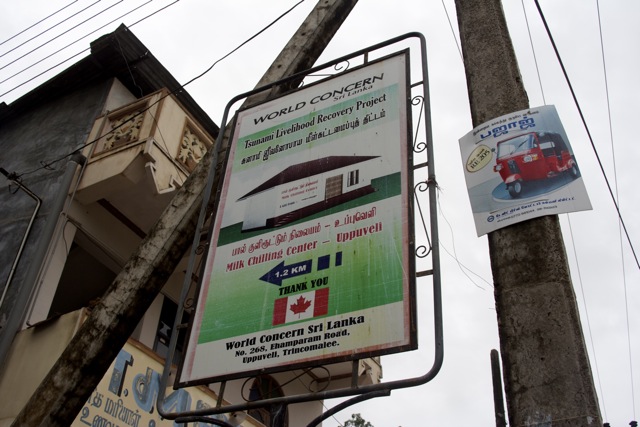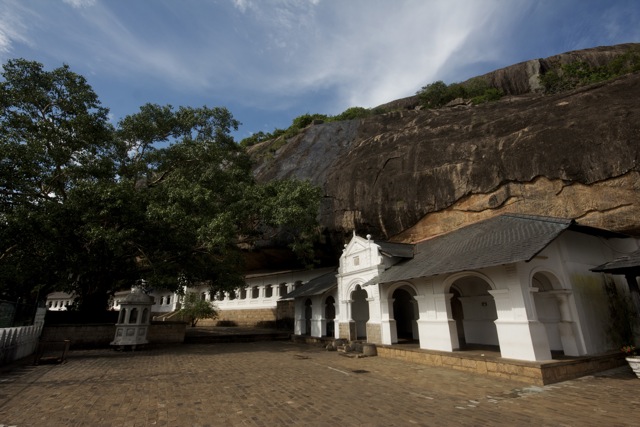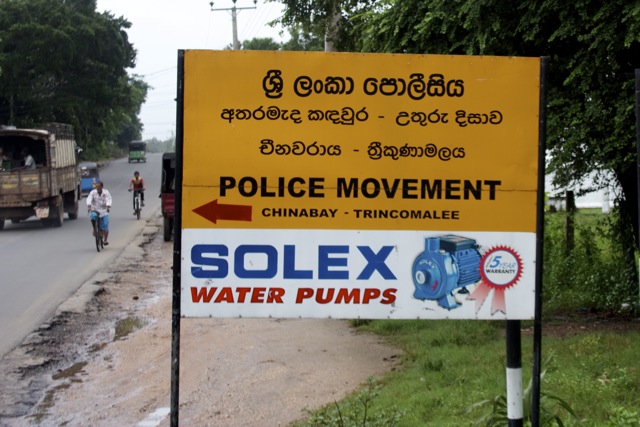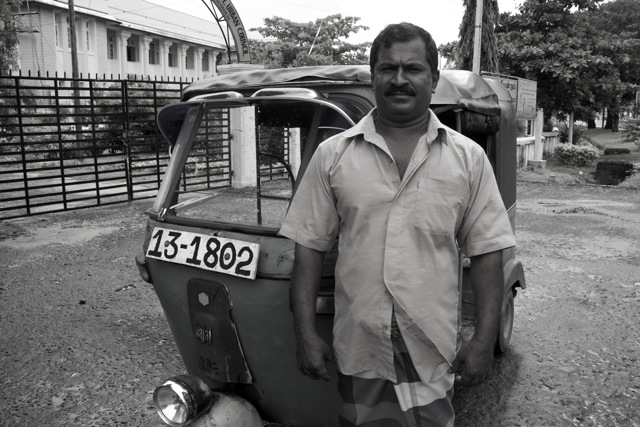“Become a stranger in a strange land. Acquire humility. Learn the language. Listen to what the people are saying.”
— Paul Theroux
“Hello, my friend! Where from? Where going? You want to ask me a question? I can speak with you, I know English, you can ask me anything you want. You understand my English? Okay, my friend?”
I turned from the sign I’d been photographing in Trincomalee, Sri Lanka, and looked at my new “friend.” It took me a moment to reply to him–not because of his English, which was very good–but because of how rapidly he spoke. Imagine the lines above spoken at a normal rate…and then triple it.
His name was Kumara and he was substantially shorter than me, but had a broad chest and a distinguishably pointed nose. I was spending a few days in Trinco [as it’s often shortened to], a city on the country’s northeastern coast that was heavily affected by both the 2004 tsunami and the 26-year civil war that ended in 2009.
My Lonely Planet for Sri Lanka–also dated from 2009–described Trinco as “Baghdad-on-Sea” and said that if you’d never been to a recent post-conflict zone, it would make for an interesting visit. And because I hadn’t, off I went–leaving behind Colombo and the Cultural Triangle to fill in the [many] holes of my knowledge of Sri Lankan history, and to try and get a sense of what happened here.
Kumara didn’t waste any time in obliging my questions. I wanted to know what the war had been about; he began by telling me how both the Liberation Tigers of Tamil Eelam–also known as the Tamil Tigers, or LTTE, who were fighting for an independent Tamil state in Sri Lanka–used to recruit children to fight instead of sending them to school.
“Then no engineer, no doctor, no teacher. Only weapon-user. There is no future. The children get older, older, and no go to school. Now very happily all the people living. Therefore, we can expect the future. Future is a new people. Doctor, lawyer, archaeologist–”
I almost stopped him there–archaeologist? But in a country like Sri Lanka–where places like Sigiriya Rock and Dambulla’s cave temples date back to the 1st century BC–who knows. Maybe archaeology is still a viable career path.
He continued.
“Now people can stay everywhere. Travel everywhere. Live everywhere. Day, night, 24 hours. South people can stay in [the northern city of] Jaffna. Jaffna people can stay in the south. During the war, Jaffna people cannot come to south. South people cannot come to Jaffna.”
He used a lot of these inversions, what my English degree taught me is called chiasmus. John Keats used the technique when he wrote, “Beauty is truth, truth beauty” in his poem, “Ode on a Grecian Urn.” This reversing of statements has a way of making an even larger point–and it was doing the same for Kumara.
“During the war, very difficulty living. You wait one month, two months, six months sometimes for the roads to open. Today, you go 100 kilometers in one day. In Trincomalee during the war, if you want to marry a 100-kilometer-away girl, sometimes maybe you go 15 kilometers, but there is conflict and you stay there. Next day, you go 20 kilometers, then you stay. Five days later, they reach their needed place.”
The more I listened to Kumara, the more I was struck by what it must be like to have your life divided into such segments: before the war, during the war, now. My life has been continuous; his has been split into instalments.
“Not only me, but everyone, we can’t do only one employment during the war. If I am a tuk tuk driver, one month, two months, I am doing my work. But if the road is closed, or there is curfew, I can’t do my work. Therefore, no tuk tuk.
“I still need to earn some money, so I am going to the sea as a fisherman. But if there is fighting in the sea, sea is closed. Therefore, I need to find some next employment. Wood cutter, farmer, vegetable dealer. Many, many employment.”
Two years later, he now works as a driver and translator for “big hotels,” putting his English and German skills to good use, as well as enough French and Italian for “little greetings only.” The tuk tuk he was driving when I met him was to earn money on the side. Just before we said goodbye, I asked if he still did any other odd jobs.
“No, not going to do everything. Now I can do enough.”






I’ve never been to a conflict zone, but your experience of Sri Lanka and the input from the locals is helping me to understand the decisions the Home Office has made on one of my cases.
By the way – what’s with the Canadian flag, and how do I subscribe to comments so that I am notified of a reply?
Ah, that’s great! Well, you’ll have to tell me about the case (if you can) when I’m back…it’d be interesting to hear more about it. It’s amazing how much there is to learn about the civil war, but I’m trying not to get overwhelmed by it–just learning little bits as I can 🙂 And with the Canadian flag…I’m thinking the project must have been supported by an organization from Canada. What I loved most about Trincomalee was all of the signs in front of new building projects…all had been sponsored by groups like the UN, USAID, Oxfam, the German Red Cross, Caritas Austria, etc etc. So I’m sure there were several Canadian sponsored projects! About subscribing to comments…did you ever receive an email asking if you’d like to subscribe to them? That’s normally what happens when I subscribe to other people’s blogs…I’ll try to look into it soon and let you know!
Hi Candace,
I really enjoyed this entry and how taking time to stop and have a simple chat with a local can really help expand one’s understanding of such a complicated place such as Sri Lanka. Look forward to reading more about your adventures.
Rebecca
Hi Rebecca, thanks so much for your comment! I’m really glad to hear you enjoyed reading about my conversation with Kumara. I also had a look at the Cup of Local Sugar site–what a fascinating idea to connect travelers with locals. Thanks for saying hello 🙂